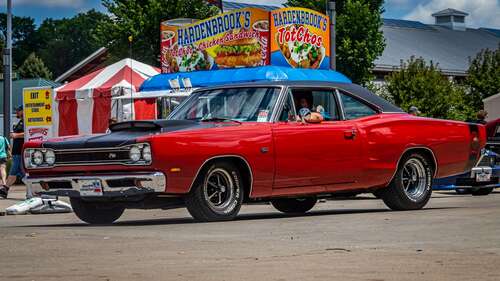
Dodge produced the Super Bee, a spin-off of the Dodge Coronet, from 1968 through 1971. The Super Bee upped the ante for the similar Plymouth Road Runner with upgraded accessories like its Hurst Competition-Plus shifter.
Built with performance objectives in mind from its inception, powertrain options for the 1968 Super Bee included the 335-horsepower 383 Magnum and the 425-horsepower 426 Hemi. Halfway through the 1969 model year, Dodge began offering the 440 Six Pack as an optional powertrain for the Super Bee.
The six-barrel carburetor setup was part of Chrysler’s A12 option package. Visual aspects of the upgraded 1969 Super Bee included a lightweight hood attached to the car with a racing-inspired pin at each corner instead of the hinges and latches found on most cars. The unique hood also featured a substantial hood scoop with an all-black paint job. The black paint carried over to a set of matching steel wheels.
In 1969, Dodge fitted nearly 2,000 Super Bees with the A12 option, compared to 125 equipped with the 426 Hemi engine. The Hemi’s high cost and finicky nature decreased its popularity.
The remodeled 1971 Dodge Super Bee shared the same platform as the Dodge Charger. The new model also offered a small block engine option, the 275-horsepower 340-cubic-inch V8.

